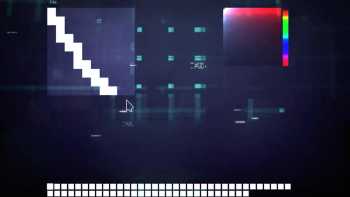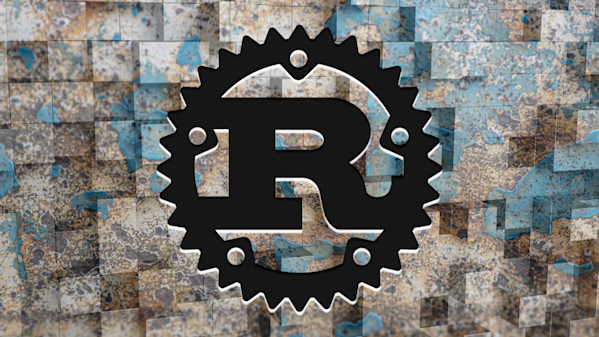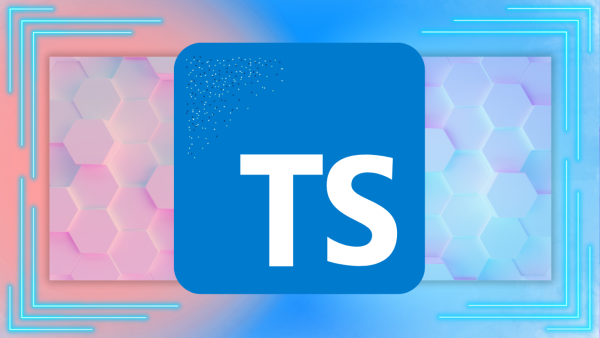What you'll learn
- Write clean, bug free Go code using best practices
- Learn the entire ecosystem of a Go programmer
- Build massively concurrent programs that scale with Goroutines and Channels
- Master Go programming from fundamentals all the way to advanced concurrency using goroutines, channels, mutexes + more
- Learn one of the best programming languages for building performant distributed Microservices
- Build a Pixl Art cross platform desktop app (+ add it to your portfolio) that will wow employers
- Create a blazing fast GREP tool that uses multiple goroutines to search for a string within files
- Have the skills and understanding of Go to confidently apply for Go (Golang) programming jobs
This Golang course covers all new Go best practices and trends and is focused on efficiency.
That means you'll never have to spend time on confusing, out-of-date, incomplete tutorials anymore.
Instead, we'll quickly push you beyond the basics so that you can build professional, modern apps on your own using the latest version of Go and become a Go Programmer.
The success stories speak for themselves.
Graduates of Zero To Mastery are now working at Google, Tesla, Amazon, Apple, IBM, Uber, Facebook, Shopify + other top tech companies. They are also working as top freelancers getting paid while working remotely around the world. This can be you.
By enrolling today, you’ll also get to join our exclusive live online community classroom to learn alongside thousands of students, alumni, mentors, TAs and Instructors.
Most importantly, you will learn from a senior industry professional that has actual real-world experience working with Go.
Why Should I Learn Go?
We like you already. Asking those smart, tough questions!
Thankfully Jayson wrote a post dedicated to answering this question but here's the top 5 reasons why you should learn Go:
- First Class Concurrency. Translation: handles massive workloads easily
- Exceptional Performance. Translation: fast like an F1 car
- Simplicity & Familiarity. Translation: easy to learn and use 🙂
- Package Manager. Translation: makes your life easy
- Proven Track Record. Translation: popular with major companies with over 20,000 Go jobs available
Read Jayson's post if you want to go deeper and see why these 5 things matter.
Ultimately, Go was created by Google to solve Google-sized problems. This has made it very popular with many companies solving massive scaling challenges. It's also one of the fastest growing programming languages released in the last ten years.
These factors = great job prospects.
There are 20,000+ job postings listed for Go programmers and their average salary of $100,000 / year.
So if you are looking for something:
- That's easy to learn
- With lots of job demand
- And can provide generous compensation
Then learning Go is a great option for you to consider.
Here's what this Golang course covers:
This course, like all Zero To Mastery courses, will aso be constantly updated as the landscape changes.
As the Go ecosystem evolves, this course will also be continually updated with lectures and resources. This will be your go-to place to find the latest Go best practices and resources anytime in the future.
1. GOLANG FUNDAMENTALS - You'll be introduced to the Golang programming language and its sought-after capabilities, specifically its ease of use as well as its efficient code-compilation and execution.
- What are Golang variables and functions?
- What is a Golang for loop?
- What are platforms?
These are the types of questions that'll be answered along with lots of demos and exercises for you to practice along the way.
2. PROGRAMMING BASICS WITH GO - The goal of this section is to get you up to speed on Go programming. You've got to drill down into the basics before you can get to mastery!
So you'll be learning how to master concepts such as pointers, memory, and concurrency that you'll be able to apply in the rest of the course and in your Master Project, an enterprise-level Pixl art editor.
3. PACKAGES & MODULES - Packages are Go's way of organizing code, while modules are a collection of packages. You'll encounter these as soon as you start coding in Go, so it's important to explore them in-depth and have an understanding of how they work.
4. DATA TYPES - You'll take the next step of working with Golang by learning everything there is to know about data types, which create an extensive system used for declaring variables and functions of different types.
5. STRUCTURES, ARRAYS, SLICES, MAPS, POINTERS - These are vital pieces of the puzzle for you to become a Go programming master. For example, structures allow data to be stored in groups, similar to a 'class' in other programming languages.
Meanwhile Golang maps are a commonly used (+ powerful, ingenious, and versatile!) data structure that stores data in key-value pairs. You'll learn all about these (and more!) while solidifying your knowledge with exercises and demos.
6. TESTING - It's important to test software to prevent regressions and ensure it meets specifications. To accomplish this there's two primary of methods of testing: unit testing and integration testing.
You'll learn about test tables and examples of test code, and by the end you'll understand exactly how to set up your tests.
7. INTERFACES - Interfaces allow us to specify the behavior of a type instead of the type itself. This allows functions to operate on more than one type of data. You'll fully understand why and how interfaces are implicitly implemented.
8. ERROR HANDLING - Go has no exceptions. Instead, errors are returned as the last returned value from a function. This encodes the failure of a function as part of the function signature itself.
You'll learn exactly why and how this makes it simple to determine if a function can fail in Go so that you can write and deploy perfect code.
9. CONCURRENT PROGRAMMING - Generally code executes line-by-line. But when you have concurrency, you're allowed to execute multiple lines at a time. Concurrent code can get messy pretty quickly, but one of the great things about Go is that it automatically chooses between the different types of concurrent programming. You'll learn exactly how to use that to your advantage.
10. BUILDING PROFESSIONAL PROJECTS WITH GO - You'll be using your Go knowledge to create an enterprise-level Pixl Art editor as your Final Project.
You'll apply all you've learned about pointers, function literals, closures, modules, packages, and interfaces to help solidify your Golang knowledge while buidling something awesome at the same time.
And it's sure to impress anyone looking at your portfolio.
Note: All code for the Pixl Art project (+ all projects and exercises) is provided step-by-step. So even if you don’t like to code along, you will get access to all the code, exercises, and projects we build right away.
What's the bottom line?
This course is not about making you just code along without understanding the principles so that when you are done with the course you don’t know what to do other than watch another tutorial. No!
This course will push you and challenge you to go from an absolute beginner in Go to someone that is in the top 10% of Go/Golang programmers 💪.
And you have nothing to lose. You can start learning right now and if this course isn't everything you expected, we'll refund you 100% within 30 days. No hassles and no questions asked.
When's the best time to get started? Today!
There's never a bad time to learn in-demand skills. But the sooner, the better. So start learning Go today by joining the ZTM Academy. You'll have a clear roadmap to developing the skills to build your own projects, get hired, and advance your career.
Join Zero To Mastery Now





